Review: California Dreams
Publisher: Pressman
Year: 1993
Players: 2 to 4
Tagline: Be the one to help the “CALIFORNIA DREAMS” reach the top of the music charts…and win!
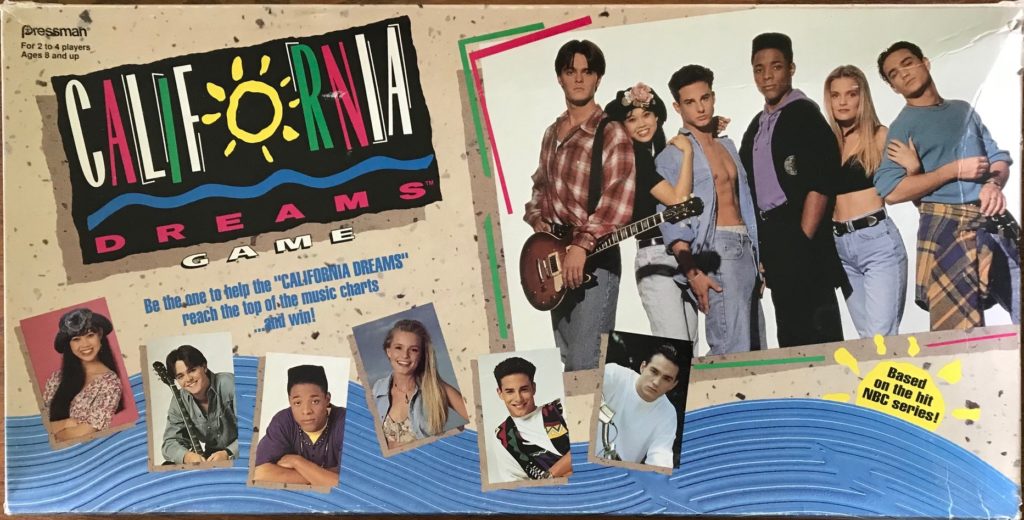
how we met
I believe I may have already mentioned the wonderful thrift stop where I found California Dreams in a past post. It was the same trip where I found a complete, dirt cheap copy of Roller Coaster Tycoon and my first copy of Murder, She Wrote. That is a pretty good stop!
I did not know much about California Dreams the television show, but I do know a little something about my ability to withstand a great board game cover. And I think you do too. I was thrilled to add California Dreams to my shelf of shame for the next several months.
how it plays
The goal of California Dreams is to have the most points in the end, indicating that you were very helpful to the band as they climb their way to the top! Then you win!
California Dreams throws a couple of unique things at you right off the bat. For one thing, the player with the shortest hair goes first. For another thing, you do not have a dedicated pawn; all pawns are in play all the time. The first step is to get them out of the Garage, so if you roll a number you can move whatever band member. Once they are all out of the Garage, you must always move the band member that is furthest behind – or choose between any that are tied for last place. Move them that number of spaces and follow the directions for the space you land on.
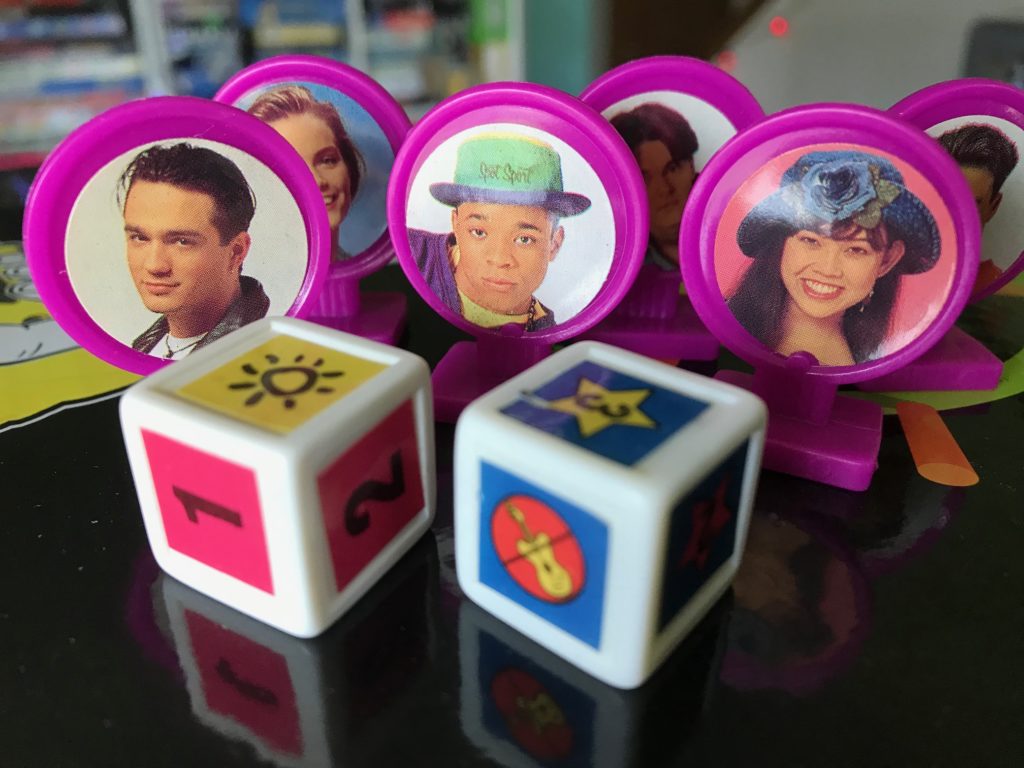
Here are some spaces on the board:
- SECRET DREAMS space: draw the top card from the SECRET DREAMS deck and read it out loud. Then secretly set aside your answer A, B, or C. Then each player will verbally say what they thought you picked. If anyone matched with you, they get one check for the band member you moved. You get 1 point plus another bonus 1 for each match. If no one matches, well, that’s a bummer!
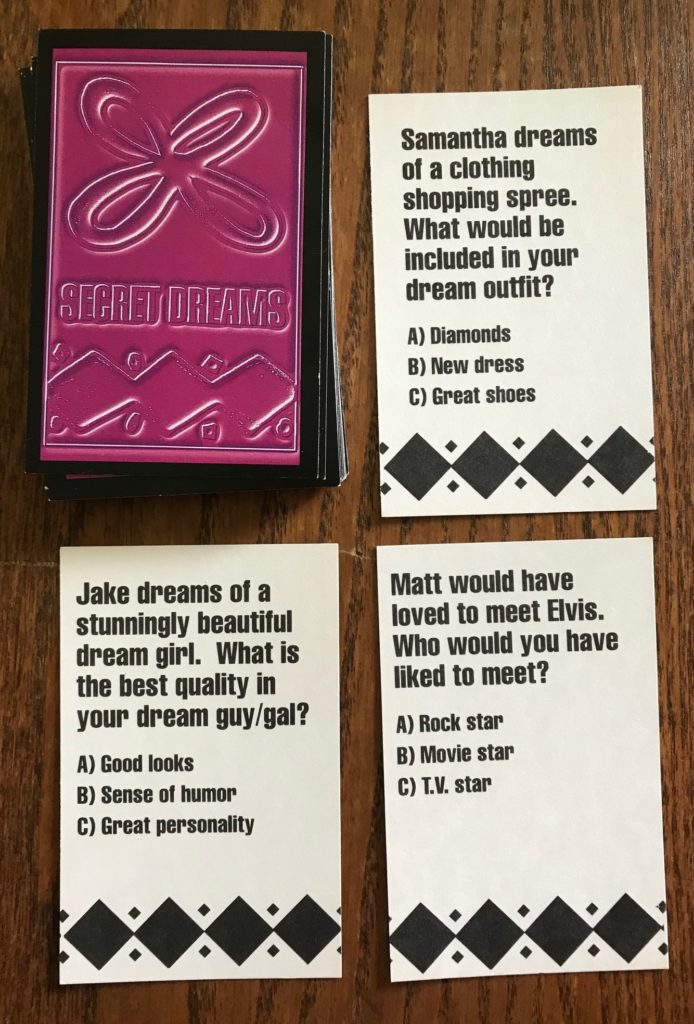
- LUCKY STAR space: draw the top card from the LUCKY STAR deck and read it out loud. This one is a bit of a crap shoot. Each player places their bet using their LUCKY STAR TOKEN on the face of the band member that they think matches. Then the spinner is spun and anyone that matches gets 3 points for that band member!
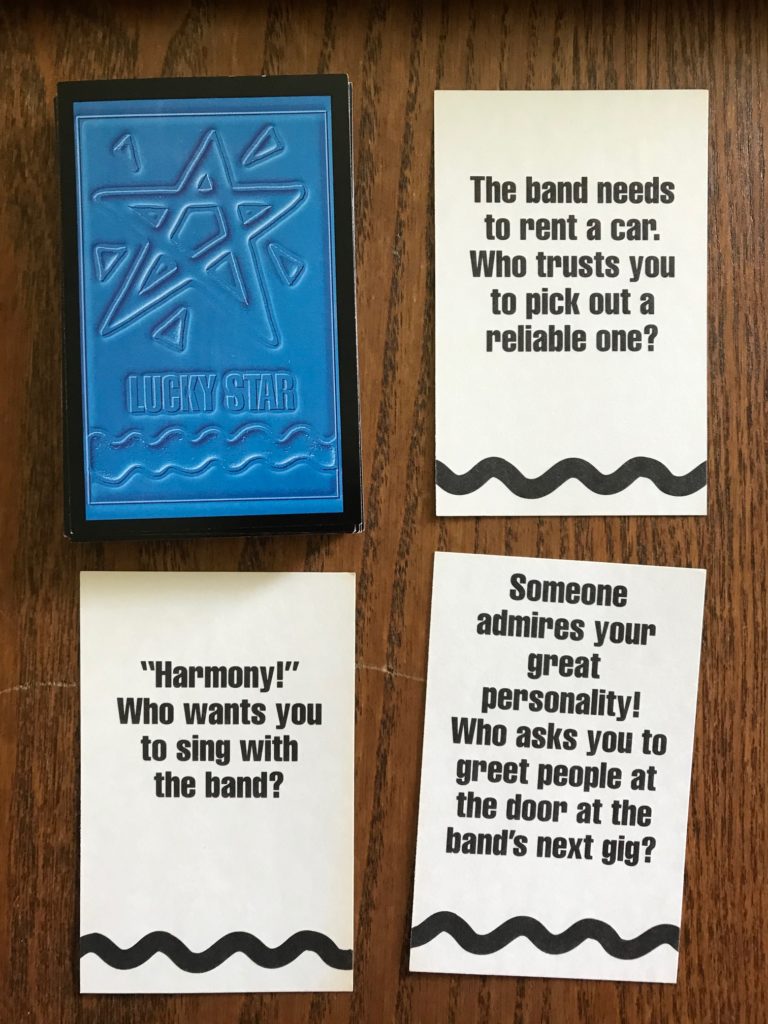
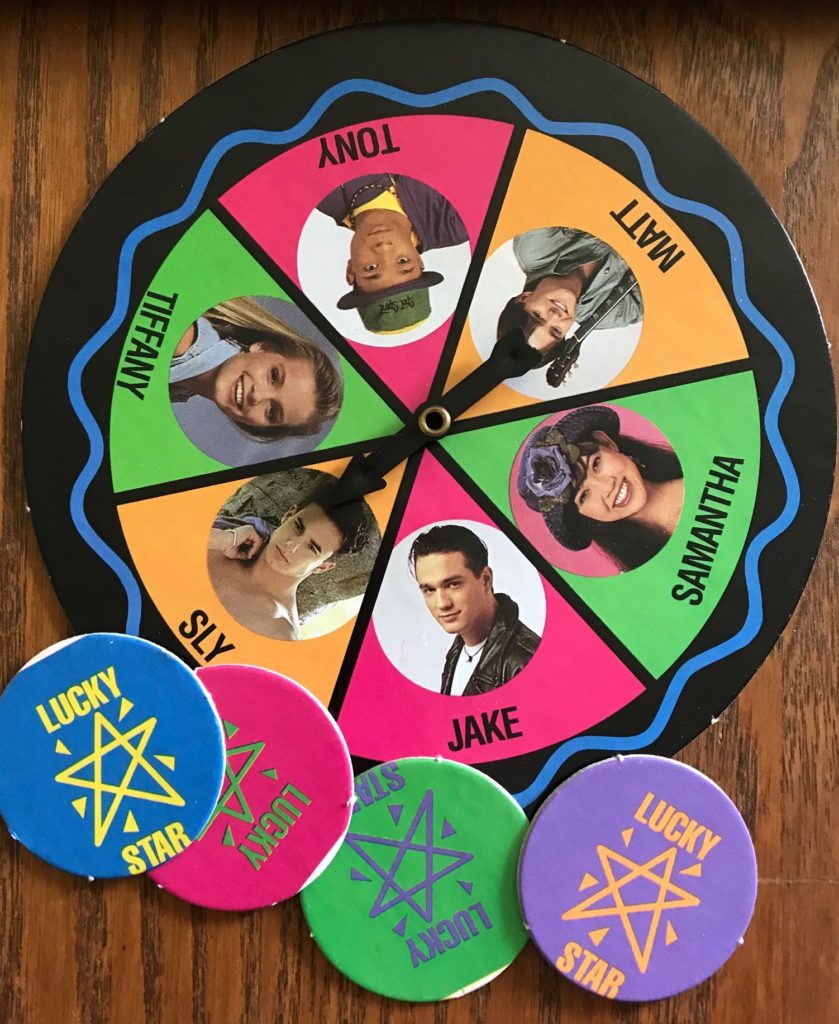
- BATTLE OF THE BANDS space: the player moving a band member here chooses another player. Starting with the player whose turn it is, they take turns rolling the BATTLE OF THE BANDS DIE until one of them gets a “no guitar” symbol. That player loses, and the winner rolls one last time to see how many points they get for that band member.
- CORNER spaces: if you land on a corner space by exact count, take 2 points for the band member you moved there.
- TOP OF THE CHARTS: when you land on TOP OF THE CHARTS you get 5 points for the band member you moved there!
If you roll a SUN, take the top card of the CALIFORNIA DREAMS deck and follow the instructions. This deck gives you valuable points which you track by placing checkmarks next to the name of the band member. But watch out because this deck can also give you negative cards which award BUMMER points!
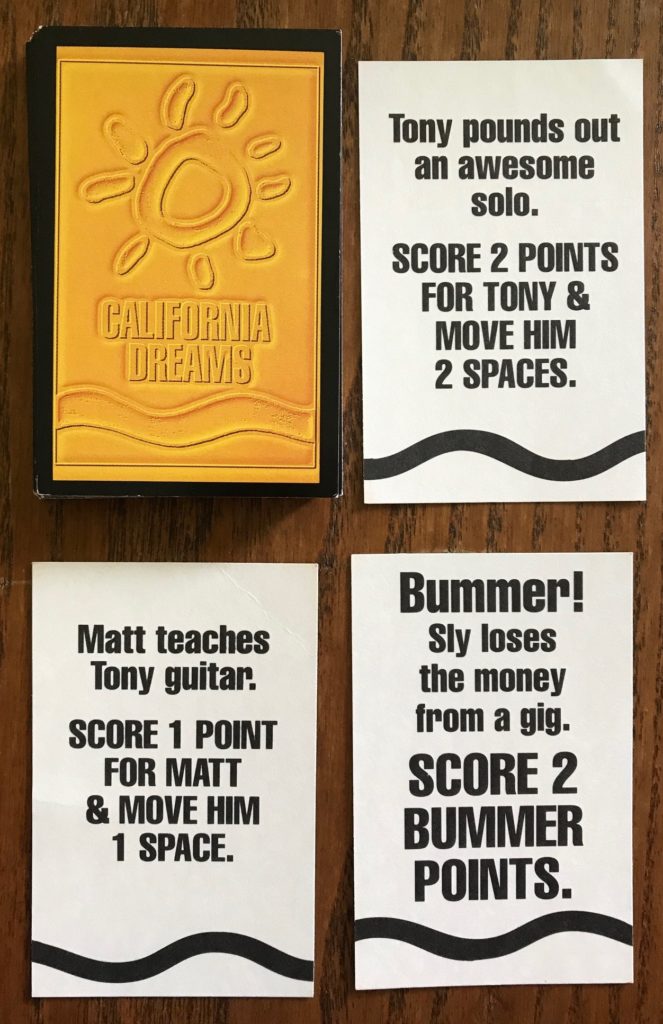
After following the directions on the CALIFORNIA DREAMS card, take another turn!
The game ends once each band member has reached the TOP OF THE CHARTS space. Then all players add up their points, subtracting any BUMMER points. The player with the most points wins!
how it went
I had not seen California Dreams prior to finding the game and only watched a couple of early episodes on YouTube after playing. This was not nearly enough info to compare gameplay with the show. So I turned to an expert, Stef of HappiMess Media (check out her hilarious and creative coloring book out now). Here was her response when I asked if she would mind sharing her experience and/or memories of the show:
“Do I MIND? I LIVE for discussing ‘90s sitcoms starring privileged, unchaperoned teens, especially ones who are in a band and get into wacky hijinks.
“Can I recall a single episode of California Dreams, though? Not at all; it was a rare treat for me to actually catch it on TV. I remember they had a dope rehearsal area, with a Beach + Trapper Keeper aesthetic. There was the tough-but-sensitive guy in the leather jacket, and the gorgeous blonde, whom I so wanted to be because she was a gorgeous blonde. And I of course recall Sly, a girl-crazy, slick-tongued schemer who finagled a role as band manager.
“How could Young Me NOT love California Dreams? Was it the most original thing? Not a chance, but it showcased close friendships with young, good-looking people and the taste of fame and freedom. There were no adults in sight, and everything took place near the Pacific Ocean. In other words, it featured all the elements that my little self aspired to—and, admittedly, what excites my adult self to this day.”
Stef of HappiMess Media
I am not sure our play revealed much of what California Dreams is all about other than the general aesthetic and very high level plot that band members want to do well with their band. But for example the LUCKY STAR space determines which character goes with which card by spinning the spinner. So while some cards specifically tie an event to a character (like UGH Sly lost all the money from the gig BUMMER!), many cards are assigned randomly to characters. Kind of an odd choice if the characters of the show are fully formed.
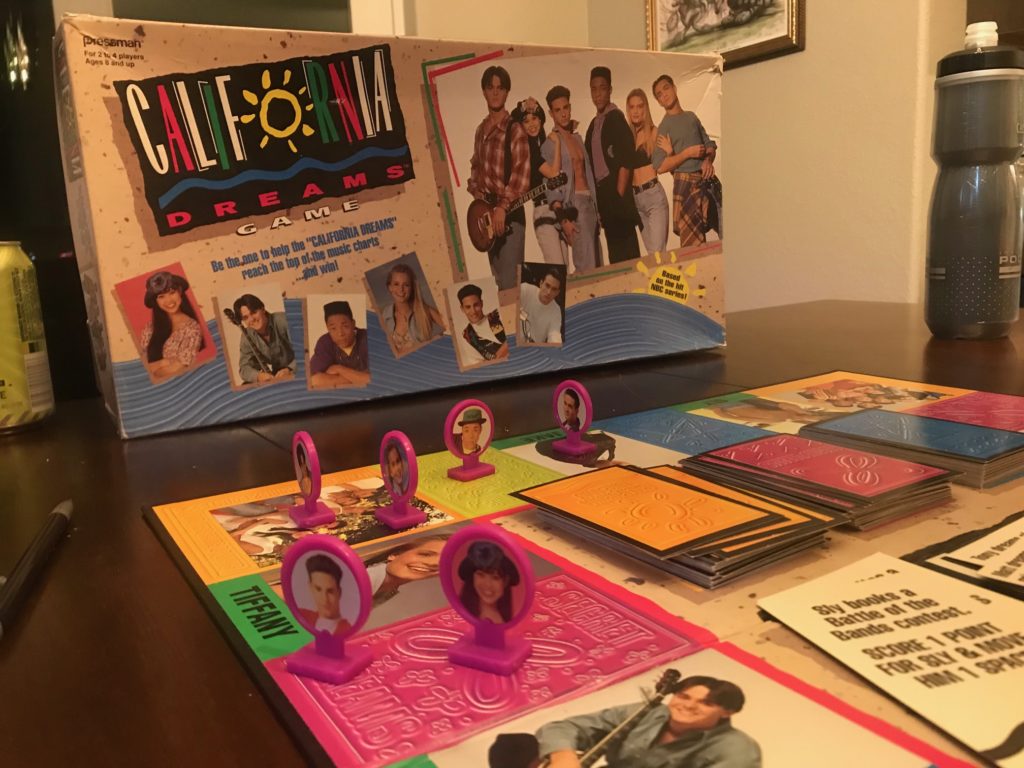
I thought the choice to not assign individual pawns was actually pretty clever for this type of game. Sure, there’s not much strategy in having to always move the last band member on the track, but this also means you are not playing as one of the characters. So our girl Stef playing this as a young person would not be taking on a character but instead hanging out with all the band members as herself, and helping them rise to the top of the charts to boot!
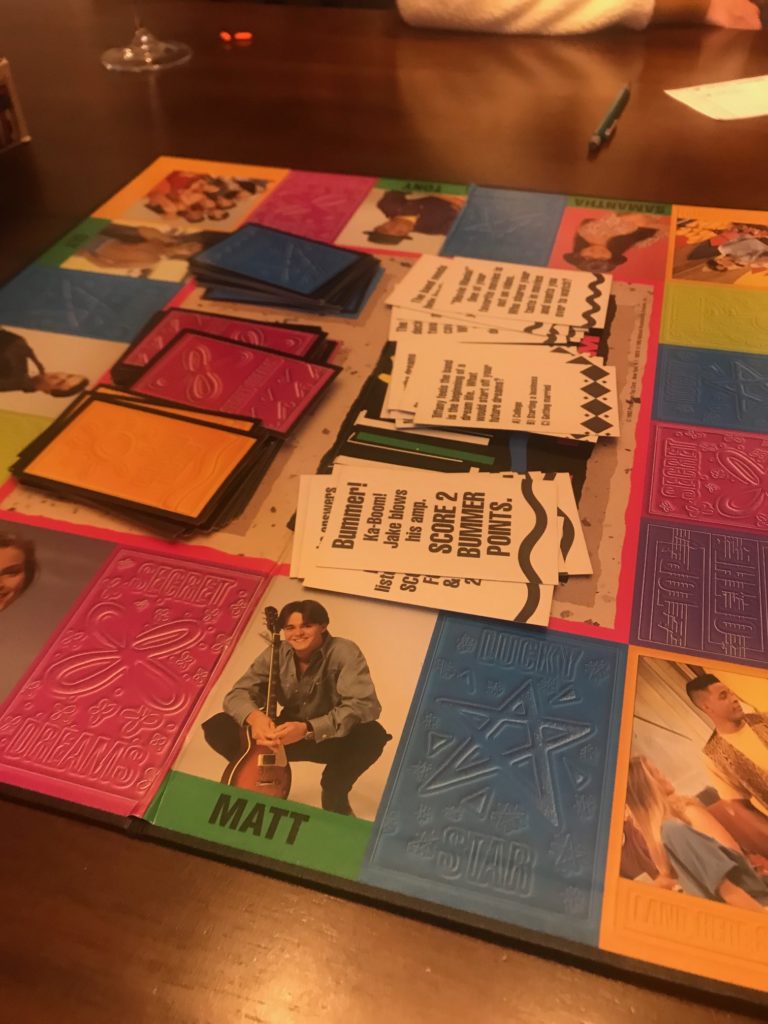
Only one of our game group was unlucky enough to encounter BUMMER points during play, and they came in last. The rest of us were spread out a bit, and John won California Dreams!
play or pass
Not a complete bummer, but I still say pass. I think California Dreams does some interesting things with the pawn movement. I like how it places you as yourself joining the characters instead of playing as a character. But ultimately California Dreams is based too heavily on luck, even for me. I also don’t think the characters came to life in this game very well. We had a fun play through, but that was enough for me.